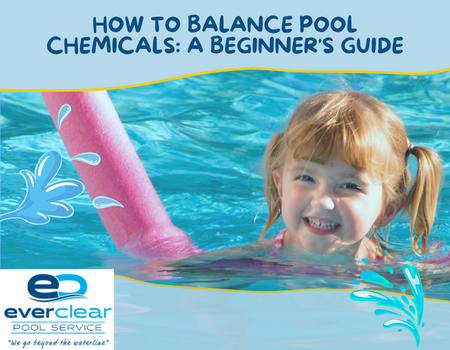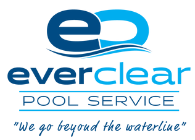Balancing pool chemicals likely isn’t the first thing you think of when embarking on the journey to owning a pool. Owning a pool is a delightful addition to any home, offering a refreshing oasis for relaxation and recreation. However, to keep your pool water clean, clear, and safe for swimming, it’s essential to maintain the proper balance of pool chemicals. For many homeowners, the prospect of balancing pool chemicals may seem daunting, but with the right knowledge and guidance, it can become a straightforward and manageable task. In this guide, we’ll walk you through everything you need to know about balancing pool chemicals, from understanding the importance of chemical balance to step-by-step instructions for testing and adjusting your pool’s chemical levels. Whether you’re a new pool owner or looking to improve your pool maintenance skills, this guide will empower you to keep your pool sparkling and inviting for all to enjoy.
 Understanding the Importance of Pool Chemicals:
Understanding the Importance of Pool Chemicals:
Before diving into the specifics of balancing pool chemicals, it’s crucial to grasp why maintaining proper chemical balance is vital for pool maintenance. Pool chemicals play several critical roles, including disinfection, pH regulation, and algae prevention. When pool chemicals are out of balance, it can lead to a range of issues, such as cloudy water, algae growth, skin and eye irritation, and damage to pool equipment. By keeping your pool’s chemical levels within the recommended ranges, you’ll ensure a clean, safe, and comfortable swimming environment for you and your family.
The key chemical parameters to monitor and balance in your pool include:
- Chlorine: Chlorine is a powerful sanitizer that helps kill bacteria, viruses, and other contaminants in the pool water. Maintaining the proper chlorine level is essential for keeping your pool water safe and sanitary. The ideal chlorine level for a swimming pool typically falls within the range of 1.0 to 3.0 parts per million (ppm).
- pH Level: pH measures the acidity or alkalinity of the pool water. The optimal pH range for pool water is between 7.2 and 7.6. Maintaining the correct pH level is critical for ensuring the effectiveness of chlorine and preventing issues such as skin and eye irritation.
- Total Alkalinity: Total alkalinity acts as a buffer, helping to stabilize the pH level of the pool water and prevent rapid pH fluctuations. The recommended alkalinity level for a swimming pool typically ranges from 80 to 120 parts per million (ppm).
- Calcium Hardness: Calcium hardness refers to the concentration of calcium ions in the pool water. The ideal calcium hardness range for a swimming pool is typically between 200 and 400 parts per million (ppm).
Testing Pool Chemicals:
The first step in balancing pool chemicals is testing the water to determine its current chemical levels accurately. Pool water should be tested regularly using a reliable test kit or test strips.
When testing your pool water, follow these steps:
- Use a clean test kit or test strips specifically designed for testing pool water.
- Follow the manufacturer’s instructions carefully for each test parameter, including chlorine, pH, total alkalinity, and calcium hardness.
- Collect a water sample from a depth of about 18 inches to 24 inches below the water surface. Fill the test vial or container with the water sample to the appropriate level.
- Add the test reagents or strips to the water sample according to the instructions provided.
- Wait for the specified amount of time (usually a few seconds to a few minutes) for the test results to develop.
- Compare the color or reading of the test results to the color chart or scale provided with the test kit to determine the chemical levels in your pool water.
Adjusting Pool Chemicals:
Once you’ve tested your pool water and identified any chemical imbalances, it’s time to take corrective action to bring the chemical levels back into the recommended ranges. Here are some common methods for adjusting pool chemical levels:
- Adding Chlorine: If the chlorine level in your pool is too low, you can add chlorine in the form of liquid chlorine, chlorine tablets, or granular chlorine. Follow the manufacturer’s instructions carefully when adding chlorine to your pool to avoid over-chlorination.
- Adjusting pH Level: To raise the pH level of your pool water, you can add a pH increaser such as sodium carbonate (soda ash) or sodium bicarbonate (baking soda). To lower the pH level, you can add a pH decreaser such as sodium bisulfate or muriatic acid. Be sure to add pH-adjusting chemicals slowly and in small increments to avoid drastic pH swings.
- Balancing Alkalinity: If the alkalinity level in your pool is too low, you can add an alkalinity increaser such as sodium bicarbonate. To lower alkalinity, you can add muriatic acid or sodium bisulfate. Again, it’s essential to add these chemicals slowly and in small doses to avoid sudden changes in alkalinity.
- Adjusting Calcium Hardness: If the calcium hardness level in your pool is too low, you can add calcium chloride to increase hardness. To lower calcium hardness, you can dilute the pool water with fresh water. Keep in mind that adjusting calcium hardness can be more challenging than other chemical adjustments and may require professional assistance.
Regular Maintenance and Monitoring:
Balancing pool chemicals is not a one-time task but rather an ongoing process that requires regular maintenance and monitoring. In addition to regular testing and chemical adjustments, here are some additional tips for maintaining your pool’s chemical balance:
- Clean and Maintain Your Pool: Regularly clean your pool’s skimmer basket, pump basket, and filter to remove debris and maintain proper water circulation. Brush the pool walls and floor regularly to prevent algae growth and improve water circulation.
- Monitor Water Level: Keep an eye on your pool’s water level and top it up as needed to ensure proper filtration and circulation.
- Check Equipment Regularly: Inspect your pool’s equipment, including the pump, filter, and heater, regularly to ensure they are functioning correctly. Call for repairs or a replacement if there are any malfunctioning or damaged equipment, promptly.
- Winterize Your Pool: If you live in a region with cold winters, be sure to winterize your pool properly to protect it from freezing temperatures and prevent damage to your pool’s equipment and plumbing.
Balancing pool chemicals is a fundamental aspect of pool maintenance that every homeowner should understand. By testing your pool water regularly and adjusting chemical levels as needed, you can ensure a clean, safe, and enjoyable swimming environment for you and your family. Whether you’re a novice pool owner or a seasoned pro, following the tips outlined in this guide will help you keep your pool in optimal condition year-round.
For homeowners who prefer to leave the task of pool maintenance to the professionals, companies like Ever Clear Pool Service are on hand to give your pool the right attention that it needs to make it safe, secure, and healthy. Contact us today to learn more about pool care!
